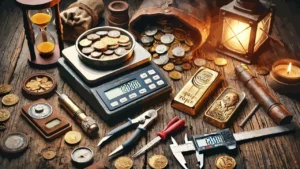A quick guide containing all the essential information you need to know when deciding to buy precious metal through financial instruments.
In this article we deal in particular with ETCs on gold and silver with a look also at platinum and palladium in order to help you discover the best fund suitable for you.
Disclaimer:
The information provided does not constitute a solicitation for the placement of personal savings. The use of the data and information contained as support for personal investment operations is at the complete risk of the reader.
Video contents
- (00:00) Introduction
- (03:53) ETCs on gold
- (19:11) ETCs on silver
- (20:58) Other ETCs
- (23:38) Conclusions
Textual contents
#1. Types of financial gold
Gold that is bought on the stock exchange or on the so-called markets, in practice financial gold, can be sold in various forms such as:
- Bank certificate,
- Unlisted mutual fund,
- Through more complex instruments: Derivatives, CFDs, Options,
- Listed commodity mutual fund: ETCs.
I advise against the first three methods from the start because they are either unnecessarily complicated or unnecessarily expensive, while the fourth method, the ETCs, represents for me the best solution in terms of costs and simplification. You can have a comprehensive list on this page of justETF.
Don’t confuse ETFs with ETCs: although both belong to the ETPs (Exchange Traded Products) family, ETFs typically track indexes of stocks or bonds, while ETCs focus on commodities like gold or oil and often involve physical backing or derivatives.
#2. Key parameters
Consider 4 main parameters when purchasing an ETP (of which ETC, ETF and ETN are part):
- Size of the fund: a large fund is also more liquid and therefore less subject to large price variations for each sale.
- TER (Rateo Spesa Complessiva): a lower cost means lower expenses, to which you usually must add an annual stamp duty that you pay to the government for the securities you own.
- Performance compared to the reference index: each fund has documentation in which usually the one called “factsheet” contains summary information useful for understanding the fund a little and how much it adheres to its reference index.
- Replication of the underlying, not all ETPs replicate the underlying:
- Physical replication: where each fund unit has a physical counterpart in some vault. I strongly recommend this one.
- Swap replication: there is no physical counterpart of the underlying but an exchange contract with a counterparty to guarantee the overall value of the fund.
- Synthetic replication: underlyings that are not physical but generally based on futures.
#3. Disinformation about ETCs
Finally, before concluding, I would like to clarify the misinformation that some “professional” gold operators spread in the counter-information channels.
It is quite common to hear a narrative according to which financial gold represents several hundred times physical gold, i.e. the gold that actually exists. This is only partly true.
In the case of purchasing ETCs labeled “Physical”, each fund unit has a certain amount of gold as the underlying asset, net of annual management costs. The ingots are held in the vaults of major banks and are periodically inspected by third-party companies to ensure as much as possible the real presence of the underlying asset. At least from a legal standpoint, there is some guarantee of indirectly owning gold.
For everything else, however, i.e. all those ETPs not labeled “Physical” or other financial instruments created without an adequate gold underlying, there is no guarantee that the underlying asset is a certain amount of gold. In that case it is quite easy for the gold present in the financial circuit not to exist in reality and to continue to hold up as long as the system works.









Leave a Reply